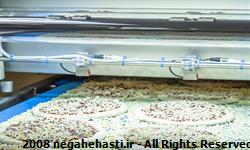![]() ارسال به دوست
ارسال به دوست  نسخه چاپي
نسخه چاپي

World of flatbreads drives technological innovation
Baking business/ For bakers seeking to extend their product portfolios, the universe of flatbreads is constantly evolving, and a world of opportunity abounds as advances in technology make those changes possible.
Specifically, international flatbreads are surging in popularity in North America. Earlier this year, Mission Foods diversified its portfolio beyond wheat and corn tortillas by adding naan, pita and roti flatbreads sold under the Mission Fresh Signature brand. For the past decade, the Irving, Texas-based company had been making flatbreads in Europe, Australia, Singapore and Malaysia before introducing them to the US market. Alexander Weissbach, head of technology, product management and Rondo’s Dough-how Center, pointed out that lavash, Mediterranean and Indian flatbreads are booming. The biggest challenge for bakers is making packaged or frozen products that are as good as freshly baked bread. “Unlike pizza, which has been produced industrially for decades, the production and industrial scale of such products has to be invented and each project requires R&D and multiple tests before finding the most suitable process,” he said. The challenge is that each region’s flatbread is made in subtly different ways. “Lavash or Lebanese breads are not the same everywhere in the world, and this is why we like bakers to visit our Dough-how Center to find the most suitable process,” Mr. Weissbach said. Jerry Murphy, vice president, sales, Gemini Bakery Equipment/KB Systems, suggested that flatbreads can be divided on roll dividers, but the heads and drums are different, and the type of release agents may change. Some formulas and crust types require a secondary rounding system on their automated lines that can turn out 2,400 to 12,000 lbs of dough per hour. David Moline, vice president of sales and marketing, Moline Machinery, pointed out that tortillas and flatbreads involve distinctively different processes, which is why they’re typically made on separate lines. Most tortillas start with dough balls that are hot- or cold-pressed under extreme pressure to totally degas the dough prior to baking it in a three-tiered oven. Bakers also can die cut a sheeted dough for larger wraps and prepared foods as a burrito or taquito. “A flatbread, because it’s a different dough with different product characteristics than a tortilla, is more likely done on a sheeting line,” he said. “You’re not going to see a flatbread done on a press like you will with tortillas.” Unlike tortillas, many flatbreads may also receive a resting period or proofing period through a waterfall-style proofer that transfers dough pieces from one tier to another. The proofing times vary, which requires a versatile process. Moline Machinery offers multiple tiered proofers that create a greater variety of product sizes on a single line. More recently, Mission Foods became the largest tortilla producer to roll out gluten-free alternatives made with cauliflower and almond flour. From a production standpoint, gluten-free and other better-for-you (BFY) items have caused processing challenges for years, but now the industry seems to have a better handle on it. AMF Tromp offers customized systems for expanding its gluten-free baked goods lines with various dough structures, moisture levels and other challenges. “These kinds of ‘new’ and healthier doughs are not standard and are not processed like a traditional dough,” said Hans Besems, executive product manager, AMF Tromp, an AMF Bakery Systems brand. “Each recipe seems to be unique, and it is hard to find a standard for producing them.” Jeff Zeak, national development manager, bakery, Reiser, said BFY doughs contain a variety of ingredients, including alternative grains, nut flours, cheese and vegetables that can be more difficult to process due to the varied consistency of the dough mixture, which ranges from a fluid, sticky batter to a stiff, viscous dough. He added custom-engineered processing may include specialized systems for transferring dough to the divider and other downstream processes or specific depositing and forming systems tailored to accommodate a range of dough consistencies. For gluten-free dough, Mr. Murphy said the main obstacle involves stickiness. “The ability to apply processing aids such as corn starches or oils is key,” he said. “Transfers during the process also become a challenge because of the binding of the doughs and the ability to have a good release during the process.” Mr. Moline said gluten-free flatbreads fall under the broader category of dough that doesn’t have any type of strength and elasticity. “You have to be extremely gentle with the dough,” he observed. “You cannot do a lot of work to this dough at any one time. It’s subject to tearing, weight control and a laundry list of issues that can produce a poor product if you don’t process it in the right way.” Dough tensioning monitoring systems, he added, minimize BFY product damage by automatically adjusting the entire line to tweaks in the process and reducing the need for additional operators working in the makeup area. Without binding agents or a gluten network, Mr. Weissbach said, it’s critical to avoid dough loops and other tension on the dough sheet. Rondo’s gluten-free pizza lines start with an independently driven three-roller extruder. “By precisely setting each roller speed, we can make the dough compact without creating surface tension or without having water separation,” he said. Perhaps the biggest challenges come initially when ramping up a new BFY flatbread product. “Those BFY flatbreads are often developed on a benchtop when a lot of people aren’t involved in the process, so it takes more time to take the product from the bench to the production line,” said Cesar Zelaya, bakery sales and technology manager for Handtmann. “As they increase the nutritional value of the product, you often don’t have all of the ingredients or ‘tools’ that normally help when you are automating the process, so you have to be flexible. You often need to adjust equipment so it can handle high-hydration dough where the consistency is more like a batter because there is so much water in it.” Handtmann offers a series of systems, including its SE 442 cutting unit along with a VF 600B dividing machine for doughs that may have various consistencies. With higher absorption rates and increased fermentation times, Mr. Kelly said softer doughs require gentle processing. “One key to dealing with these types of doughs is eliminating falling heights from each of the reduction stations,” he said. “A dough sheet proofer can also be added to increase fermentation time prior to makeup.” Other challenges include high ingredient and labor costs and a demand for greater product throughput rates. Mr. Zeak said accurate portion weight control of the dough is paramount to prevent costly product giveaway. Reiser’s Vemag provides weight control through its double-screw portioning technology and process check feedback systems that regulate the divider.
